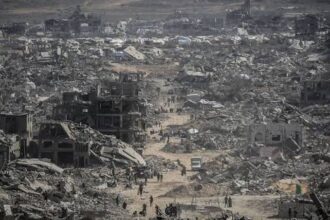Art galleries in Cairo are, in terms of location, not easy to find. Only in a few cases does an art gallery have a clear, distinctive venue on a main street in the city.
The galleries, where Cairene art lovers receive their standard art fix, are spaces hidden in magnificent buildings tucked away on idle streets downtown or on secluded side streets. It usually takes considerable effort and many phone calls to be able to get there, at least for the first time.
That is not the case with Townhouse On Site, an incredible gallery located in Zamalek’s Sequoia restaurant. Townhouse On Site is a huge wall space with a surrounding area that literally feels like a playground for any artist.
Furthermore, it’s at the entrance of one of the busiest spots in Cairo, which grants any work featured there an exceptional amount of visibility. One would think that to have their work on display in that intimidating space, artists would have to attempt their very best to present their finest work yet.
Apparently not. Ibrahim Saad’s new exhibition “My Drawings at Townhouse On Site has proven, yet again, that the real gems of Egypt’s artists are still hidden in alleyways and small art havens.
Saad has covered all the walls in lines and doodles, with what appears to be graphite, crayons and paint. The lines create amoebic shapes that are occasionally stabbed with a painted crucifix hammered into the wall.
The entire space has a deafeningly loud soundtrack – a sound installation specifically made to accompany the exhibition, yet failing to relate to or compliment it altogether.
The entire production obviously has good intentions. The artist’s statement clearly explains that he is trying to define and discover himself through these drawings, and despite the fact that this statement is written in a pompous, pretentious manner, it does validate the shapes on the walls.
Sculptor Henry Moore once said, “Drawing is a means of finding your way about things and a way of experiencing certain tryouts and attempts. Saad though failed to portray the weight of life experiences or the thrill of his search for himself to the viewers.
His use of the space is repetitive, bearing no compositional skills. He doesn’t pay enough attention to the delicacy of line, which could’ve easily made this piece a magnificent one. Instead, his lines are blunt and clumsy.
Although he uses a calming palette of earthy colors, they were too monotonous for the large space and therefore lacked contrast and, consequently, appeal.
This is the problem with abstract drawing; something, unfortunately, Saad has managed to illustrate clearly.
Abstract art in general evokes emotion, since it is by default of being abstract, void of anything recognizable or tangible. Abstract art usually touches viewers on a subconscious level, since it involves a sharper sense of immediacy, informality and intimacy between the artist and his work, and its impact on viewers. Saad has failed to bring forward this sense of intimacy.
In fact, what was alarming was the sense of alienation between the work and the people looking at it.
In retrospect, what was most disappointing about Saad’s exhibition is not the work itself, but the process behind it. Before taking on such a space, it is imperative that enough research and planning is conducted to execute whatever is in the artist’s mind to best possible effect.
If the search for oneself is intended to be shared between Saad and the viewers, then the viewers should have been allowed to be more involved in the work, as is the case with the works of Ernesto Caviano, Julie Mehretu, or Anna Sigmund Gudmunsdottier, all of whom have dealt with the very same subject in a very different way.
Saad’s approach to the creation of his work is haphazard and hollow, making the search for himself appear unfortunately void of emotion and bursting with arrogance.


